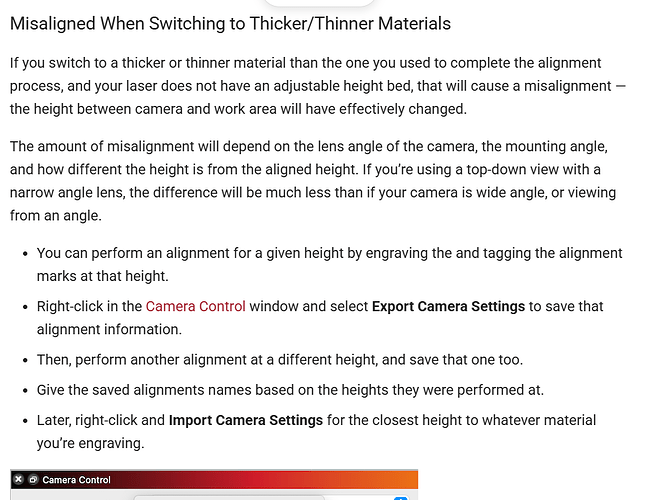Laser: OmTech Polar Lite 55W CO2 LB Version: Ruida LightBurn Pro 2.0.03
After successful camera alignment, when I proceed to laser an item, the size of my design(graphic or shape) in LB is not the same as what is being engraved onto my item and the alignment will be off. Of course I go through the steps of locating the item using the camera overlay and setting the focus height. And the actual engraving done is of good quality, just not in the proper spot on the item/material. And to mention, the machine does not have an adjustable bed. I believe the issue is per the LB help documentation(see below), that when you attempt to engrave an item/material of a different thickness than the thickness the camera calibration was done at, you have to recalibrate the camera at the new thickness of the item/material. Not sure this is the issue. Please let me know? But if true, the next problem becomes, to recalibrate for an item/material of a different thickness than initial calibration is just not feasible. For instance, calibrating to engrave on a RFID Blocking Wallet or any other nominal size item is impossible. I have to say, while not being a programmer/coder, I do not understand why the focus height can not be used to mathematically calculate the data needed to adjust for the new item/material height. Help please. As of now I just have an expensive paperweight that can not be used properly. Thanks..
